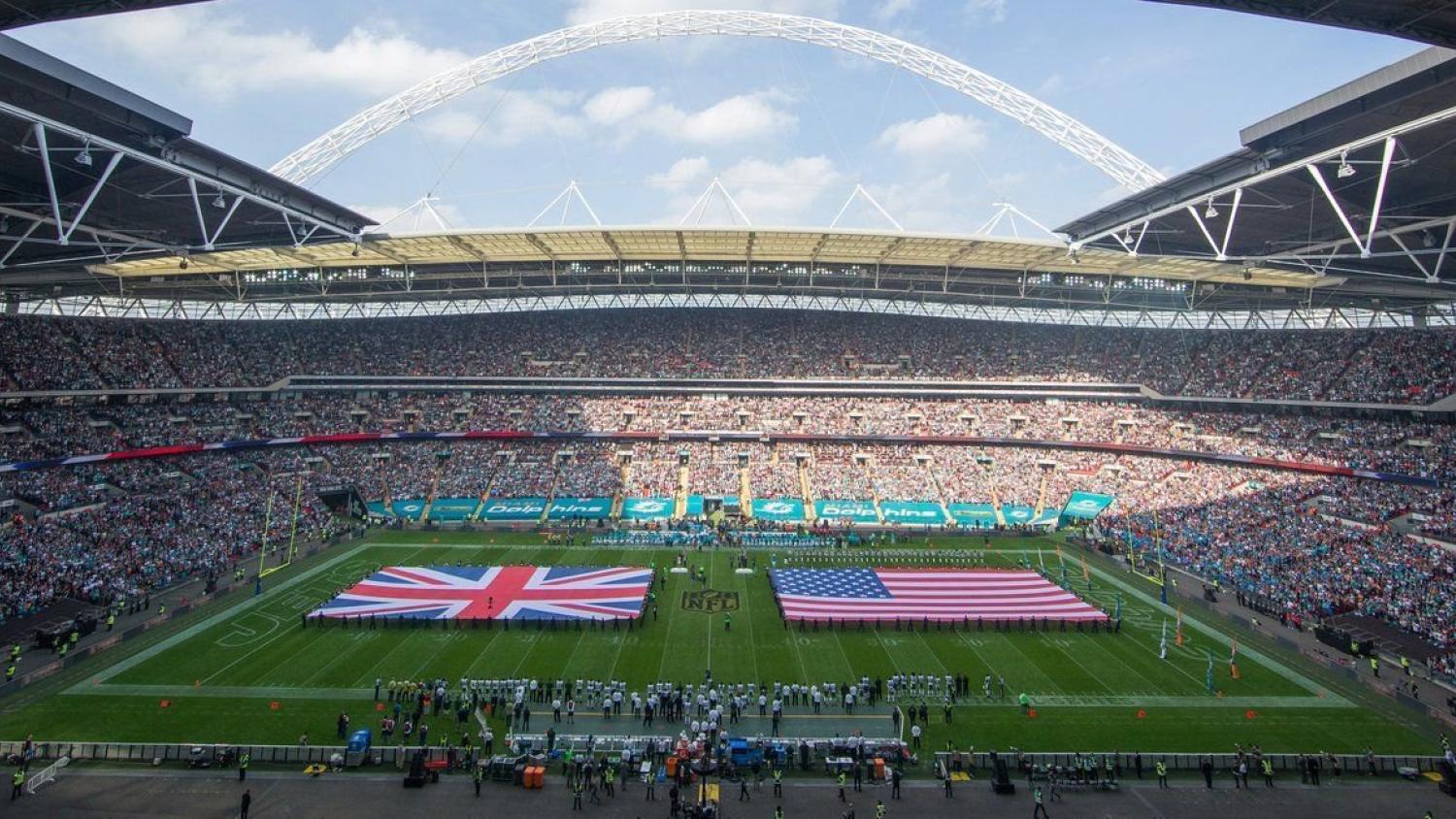The National Football League returns to England on Sunday as the Baltimore Ravens face the Jacksonville Jaguars at Wembley Stadium, a now biannual feature as the league is desperate to gain British NFL fans. Meanwhile, soccer leagues across Europe are considering bringing regular-season games to the U.S.
Both the NFL and EPL are ratings giants in their native lands, the most popular leagues in the world in their respective sports. Having essentially saturated their domestic markets, both leagues are now desperate to spread overseas, the NFL to the UK and EPL to the U.S.
.@Ravens vs. @Jaguars from London!
Watch LIVE on @Yahoo this Sunday (9:30am ET): https://t.co/d5K9YcMz2X #WatchWithTheWorld pic.twitter.com/GyxJ1RU4Lx— NFL (@NFL) September 19, 2017
But which is having more success in this sports version of the special relationship? Which football league is more popular overseas? Well, it depends on how you measure popularity.
Comparing popularity of leagues in two different countries can be difficult. The U.S. has five times the population of the UK and a much more crowded sports landscape. In Britain, there’s soccer and everything else. In the U.S., the NFL competes with pro leagues for baseball, basketball, hockey and soccer, not to mention the popular college leagues for football and basketball.
On one hand, that leaves the NFL competing with fewer sports in Britain and more for the EPL to compete with in the U.S. On the other hand, there is a larger audience available to the EPL in the U.S. compared to the NFL in Britain.
According to Bloomberg, the NFL had just less than 15 million viewers in the UK while the EPL reached 36 million viewers in the U.S. That 15 million makes up a larger percentage of the UK population, twice as much compared to Americans watching EPL.
But that 15 million number is questionable, even though the NFL claims 18.7 percent of Britons are fans of their league. That would imply 23 percent of the country watched the NFL. By comparison, 27 percent of Britons watched the 2014 World Cup Final between Argentina and Germany and 23 percent watched the England-Italy World Cup match that year. Are we really to believe more people in the UK are interested in American hand egg than the World Cup?
A more realistic view of NFL’s popularity can come from looking at the viewership of the Super Bowl. In the UK the big game has been viewed by, on average, about one million people in recent years, about 1.5 percent of the British population.
However, the Super Bowl typically starts close to midnight in England. NFL games played in London starting at a more normal time locally averaged around 366,000 viewers, about 0.56 percent of the population despite the mundane matchups that typically feature teams no one wants to watch in the U.S., like the Jaguars.
In the U.S., 36 million people aren’t tuning in every Saturday morning to watch Burnley play Watford. The average viewership over the last couple seasons is 468,500 per match, 0.15 percent of the U.S. population, though big games like Manchester United against Manchester City top one million (0.34 percent).
In terms of percent of population, the NFL has the edge over the EPL, which also must compete against La Liga and Bundesliga for soccer fans seeking a foreign football fix.
If you look at attendance, NFL games played in London are almost always sold out and based on match-day revenue London would rank as a top-five market in the NFL. But that’s not all too impressive considering European clubs play meaningless preseason friendlies in the states and regularly sell out massive stadiums.
The NFL tried for years to spread American football overseas with NFL Europe, pouring half a billion dollars into the project. The league began in 1991 but never gained a sufficient foothold, particularly in England, with Germany home to most of the teams by the time it was disbanded in 2007. Playing regular-season games in London helps some, but it’s hard to say it’s anything more than a novelty, like the NASL in America in the 1970s.
Soccer has more of a following in America, where Major League Soccer, while by no means the most-attended league in the world, has proven successful over the last 20-plus years. Both the EPL and La Liga are considering playing regular-season matches in the U.S. to increase viewership. While regular-season matches would be well-watched and well-attended, it probably wouldn’t increase popularity all that much beyond where it already is given the amount of soccer already available in America.
Record attendance for a soccer match in the US
Real Madrid vs Manchester United110.000 in Michigan "Big House" pic.twitter.com/qr1d5hYn9I
— Leon (@LeonVegaSuarez) August 3, 2014
All that said, if you look at the money, the EPL is far ahead of the NFL when it comes to cashing in on the product overseas. NBC spent $1 billion for six years of rights to broadcast the EPL in the U.S. while the NFL is getting around $15 million in broadcast rights from the UK.
The NFL made $7.1 billion in revenue in 2015 compared to $4.3 billion for the EPL that year, meaning the Premier League makes a far greater portion of its money from the U.S. than the NFL does, not to mention the money the EPL gets selling rights in Asia, a region American football has yet to really break into.
Both soccer in America and American football in the UK are watched more by the younger audience, an important demographic for advertisers. In the U.S., young fans are more likely to watch soccer than Major League Baseball, America’s pastime.
Money says a lot about popularity, though by no means is it decisive. There are indeed more fans of the EPL in America than there are NFL fans in the UK. Percentage wise the NFL in the UK has the edge.
Overall, the two leagues are surprisingly similar in their ability to coax money and popularity out of a country that doesn’t care about their sport nearly as much as they do back home. We’ll continue seeing NFL games in London and before long the EPL may play matches in the U.S. In the end, all fans win when leagues try to expand their footprint. Unless you’re an fan on the West Coast forced to wake up at 6:30 a.m. to watch an NFL regular-season game.






